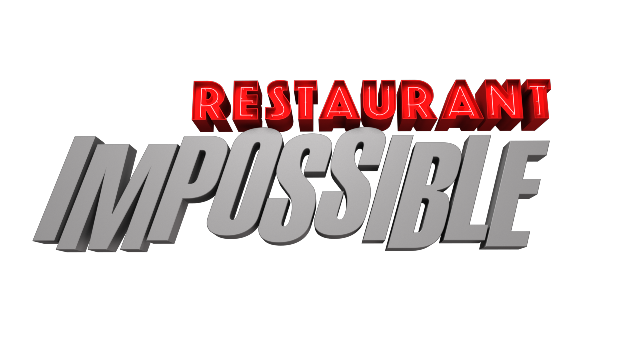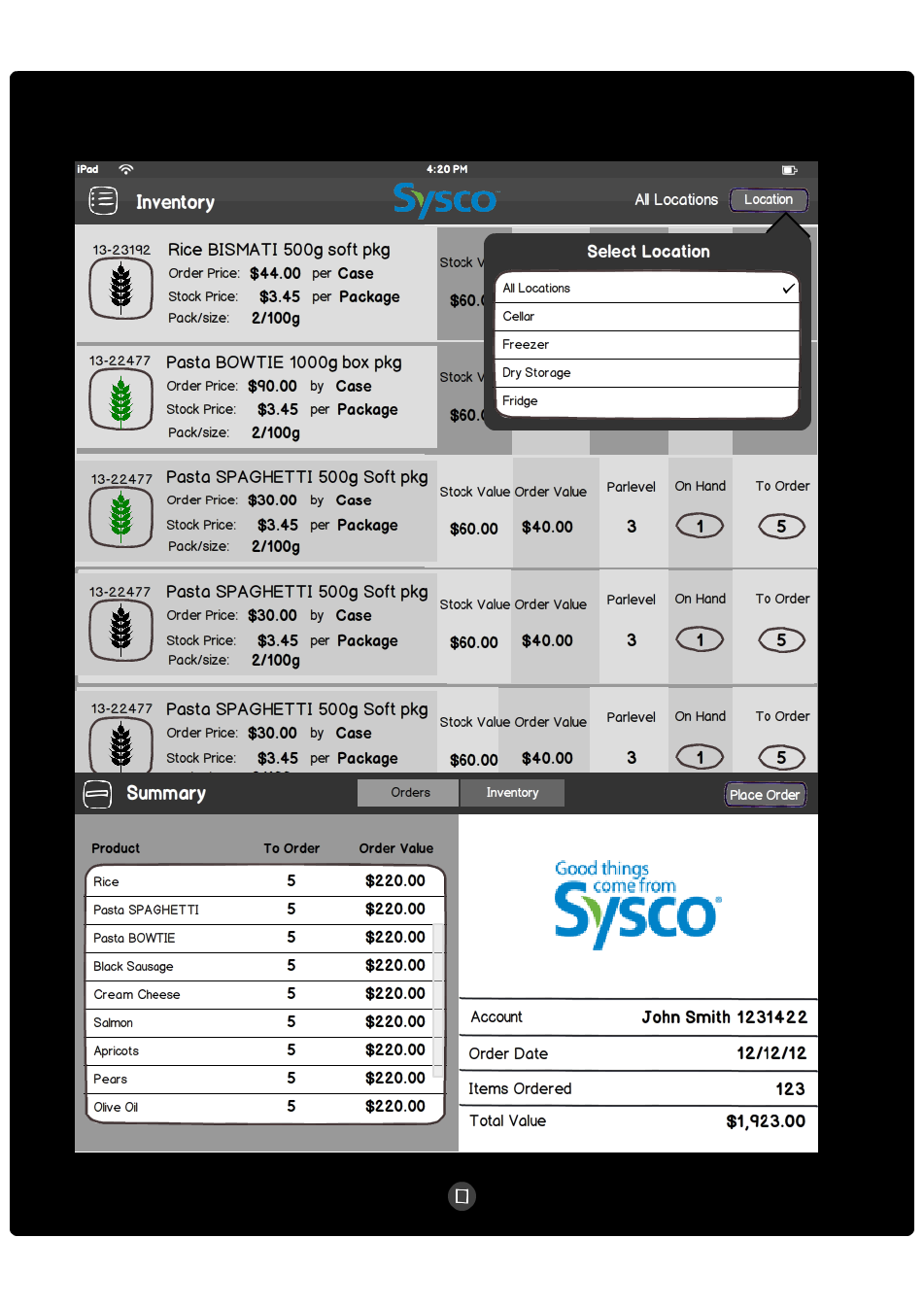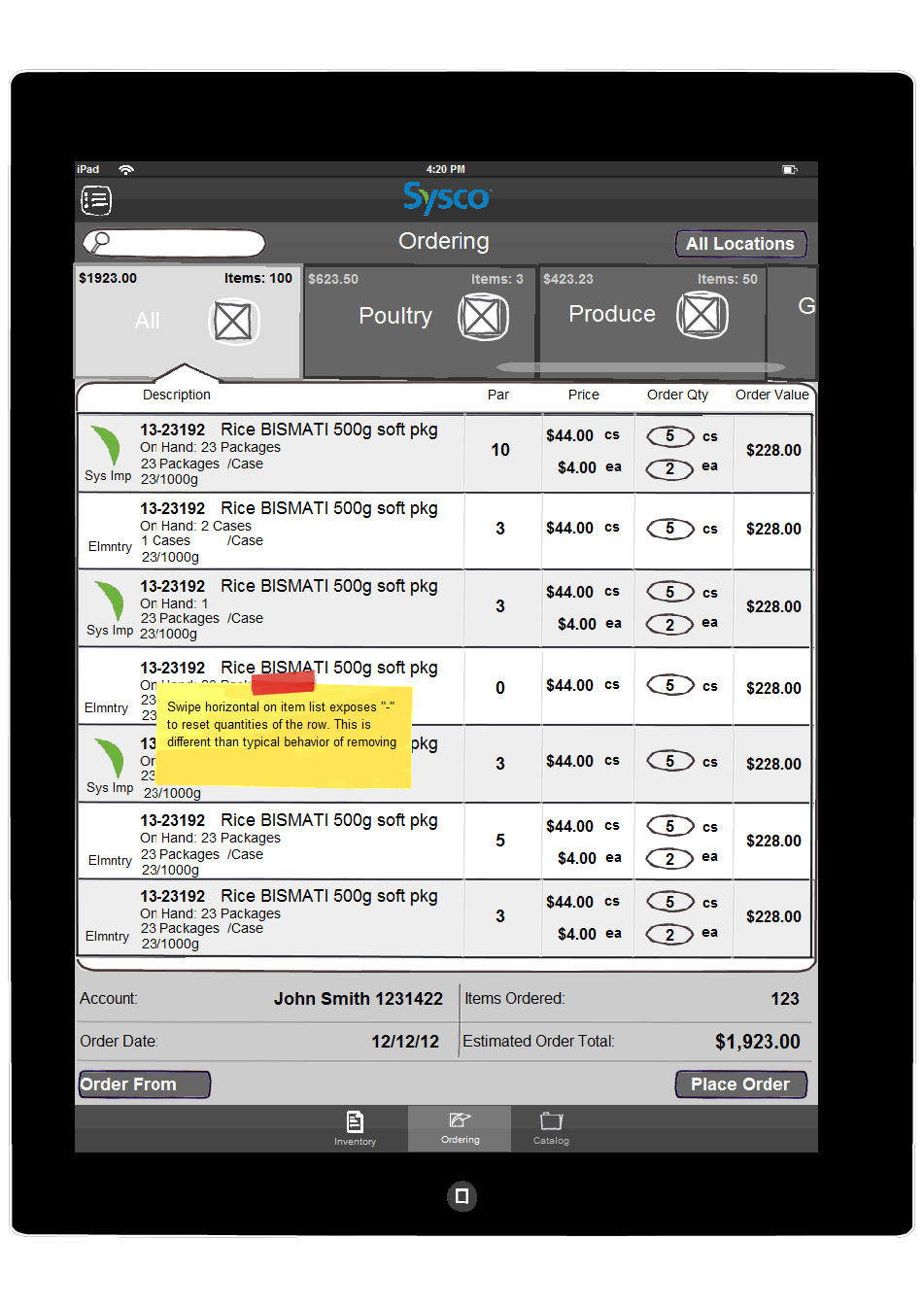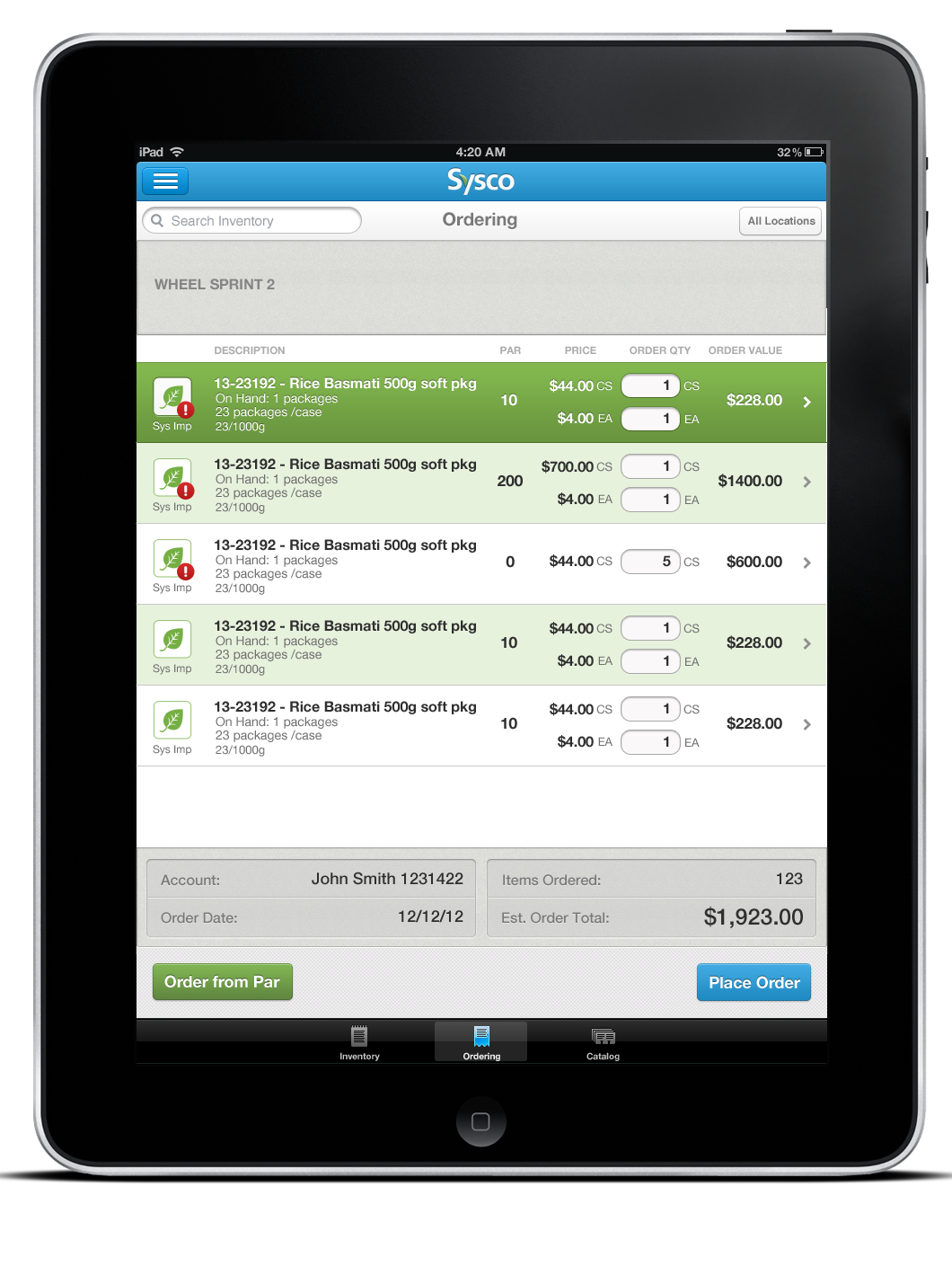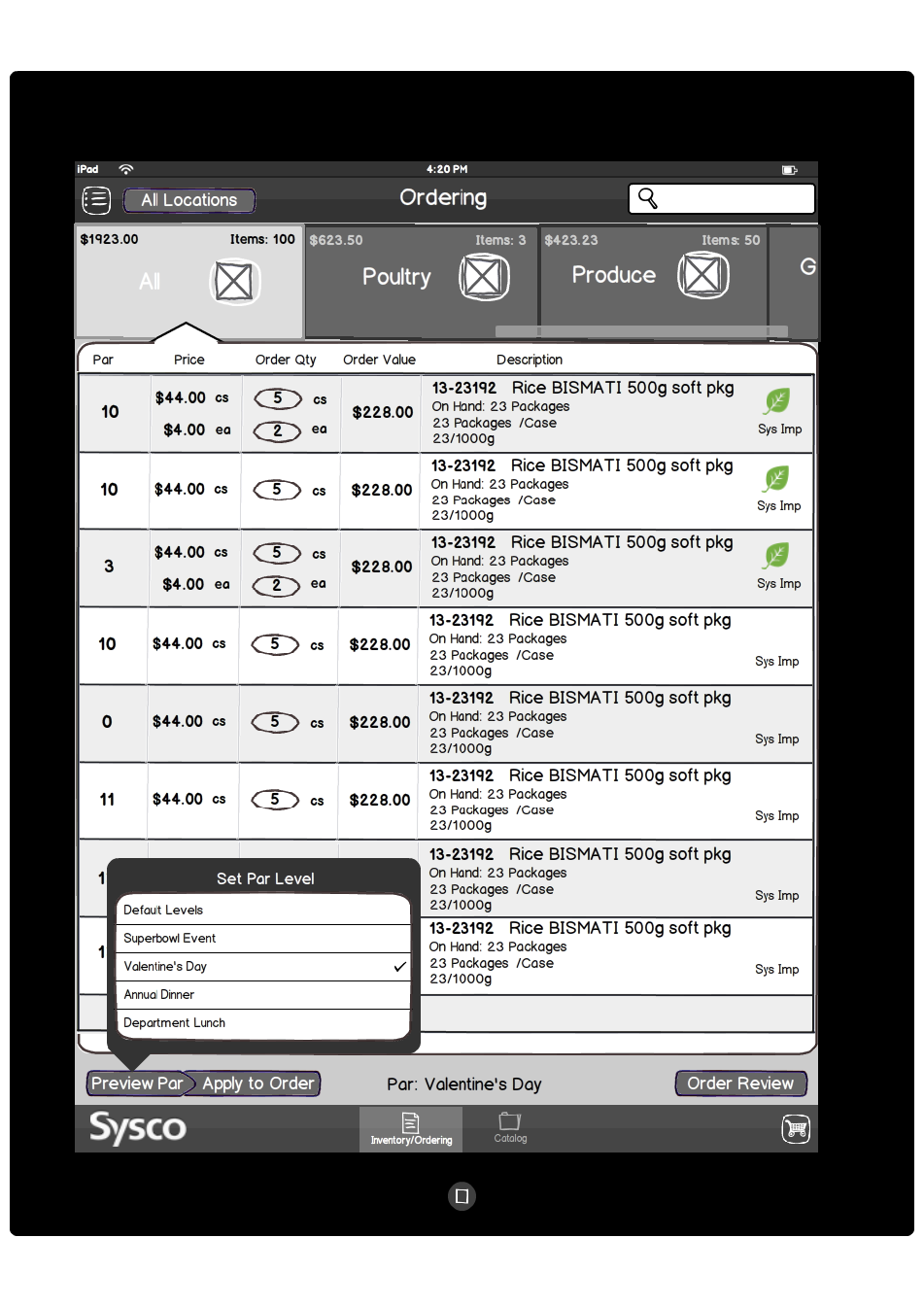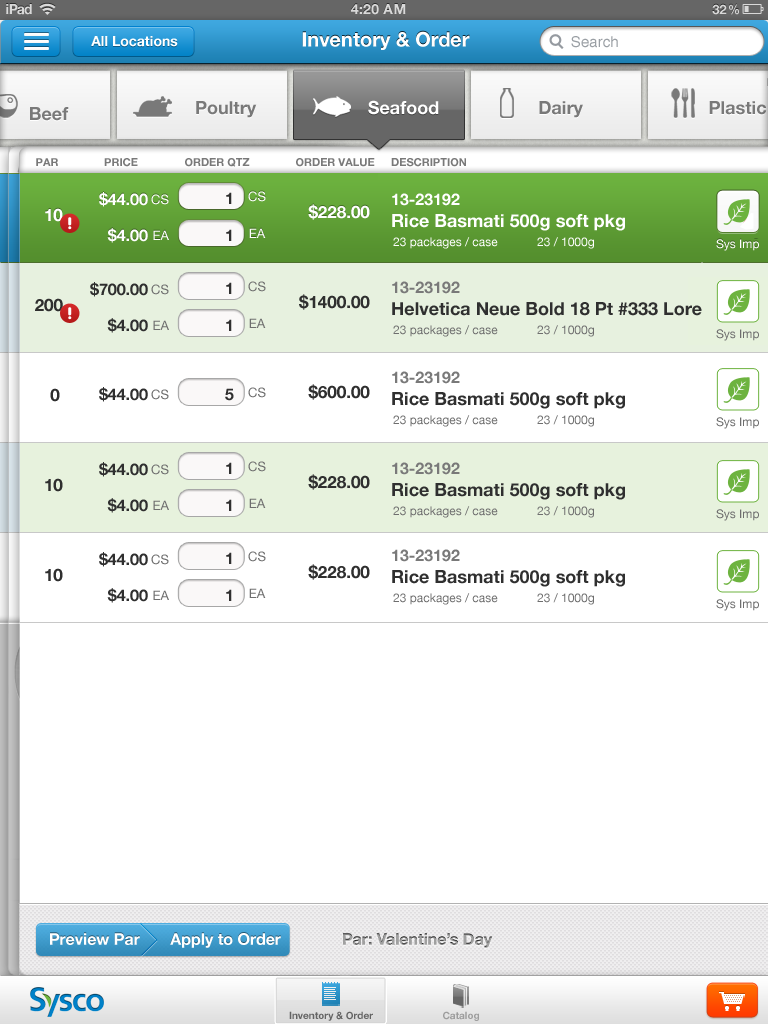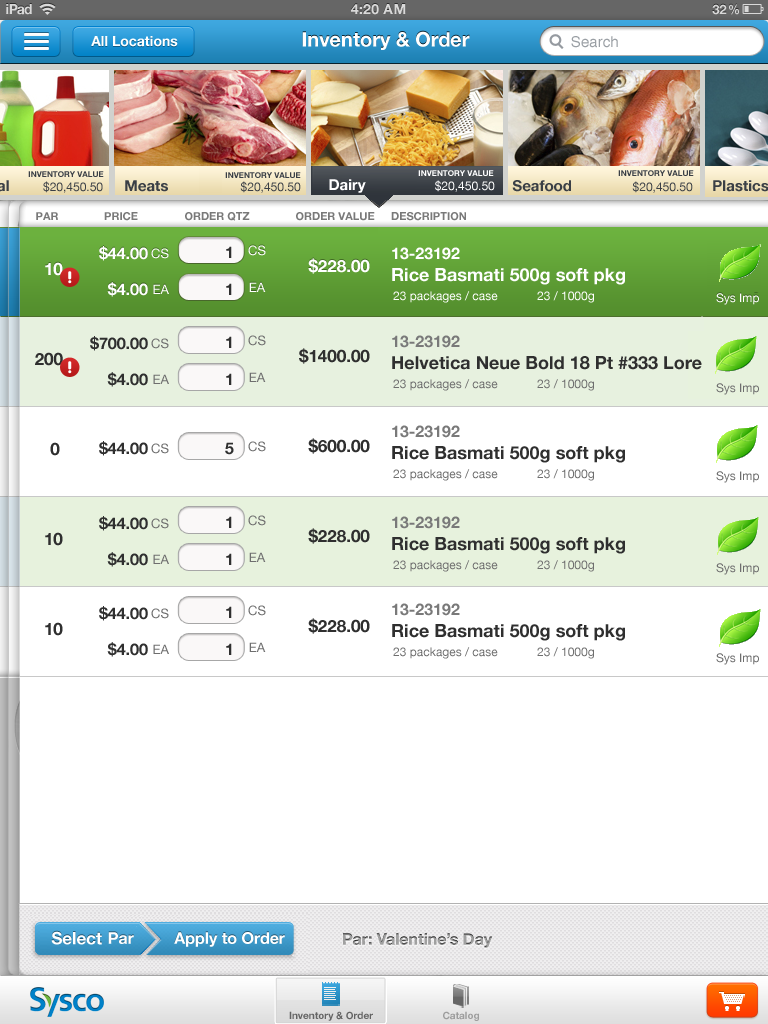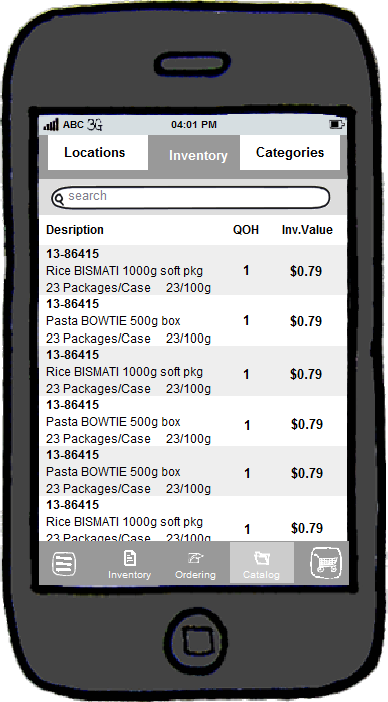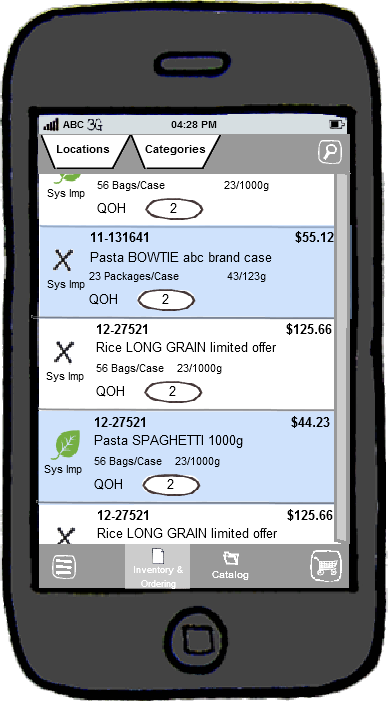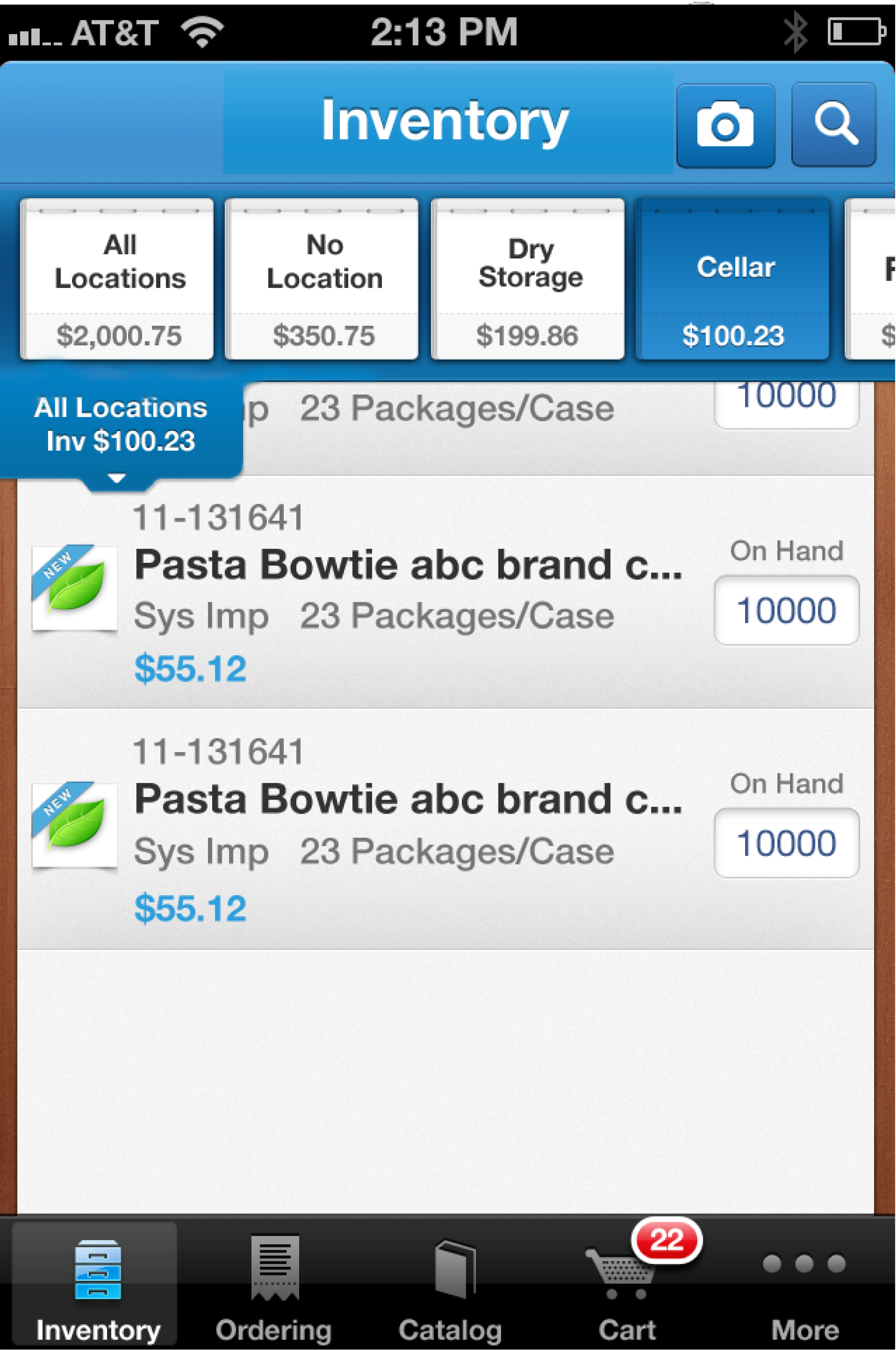Sysco Counts - HTML5 (Sencha Touch) iOS/Android
Many Sysco customers work in restaurants, grocery stores, and other food service venues. In each of these locations, clients need to track inventory and replenish foodstuffs as necessary. Before this project, inventory and ordering was monitored using laptop software- a solution that worked but was not optimal. We discovered that Sysco clients needed a portable solution usable in kitchens, pantries, cellars, and freezers, so we built an app around this concept.
Featured in the season 5 finale of Restaurant Impossible and by SAP CEO Jim Snabe in his keynote at 1:09:00.
Role: Designer
Design: 60+ days
Team Size: 10-12 people
Project Duration: 1 year
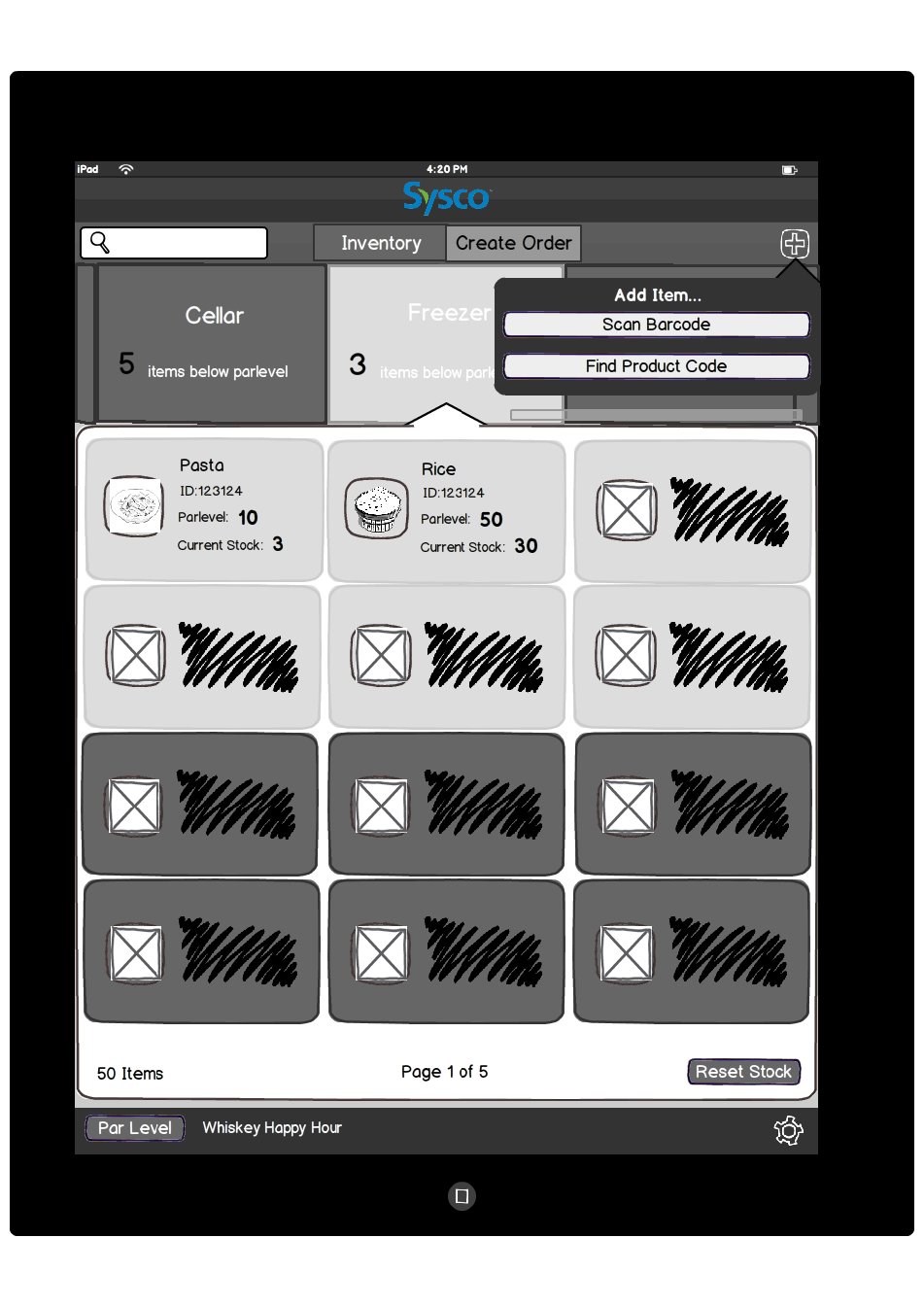
1. Before the Workshop
We started discussions with Sysco via phone and email as we planned our first on-site workshop. Since it was difficult to grasp the big picture with just a few phone calls, I gathered more ideas from old technical specifications of the desktop solution. I started visualizing the concepts on paper by imagining who the target audience would be, based on what I knew. I came up with many different designs, knowing full well it would change dramatically once I interviewed the target audience. It was however, a good way to show Sysco we were thinking about it. It helped identify the gaps in areas where we needed more information from Sysco.
2. On-site Workshop
Our first customer workshop was extremely technical and limited on the UX side. Luckily, I had the chance to talk to one end-user and go over our initial designs with the customer. They provided valuable feedback and I attempted to capture their vision in a new design. Although many basic concepts were similar, there was more information and the workflow was different from what we imagined. After rounding out the design documents based on requirements, I reviewed them with our internal UX team. The design continued to evolve as we bounced ideas back and forth. I presented our designs to Sysco at the end of each sprint.
3. Sprint 1
As we were going through our design sprints, new requests continued to flow in. It was quite difficult to stuff in new features as the design evolved but we stretched our brains and found a way. As deadlines crept close, we started being more conservative on what we could add. We managed to plow through these high-load patches as a team and came up with a design we were all comfortable with.
4. Sprint 2
After the customer approved of the overall application workflow, we started creating more color designs. Since a significant portion of the graphic designers were working across the continent, I flew down to work with them in person. The design progressed tremendously when we worked together in a single location. Design concepts eventually became design documents.
5. Sprint 3
After about two months, we completed the final color design document for Sysco. They were really happy with the result. However, our job was not done- It was time to move to the iPhone design. With less screen real estate but the same number of requirements, it proved to be an interesting challenge.
6. Sprint 4-6
The design for the iPhone progressed quickly because we understood the requirements and partly because our team was starting to gel. Ideas were exchanged internally and with Sysco as we nailed down the documentation. By this point, we had gained Sysco's trust, so we had freedom to push the design forward with fewer reviews. After a couple of weeks, we completed the color design and handed it off to Sysco and our development team. Other than occasional requests of support, our job was complete.
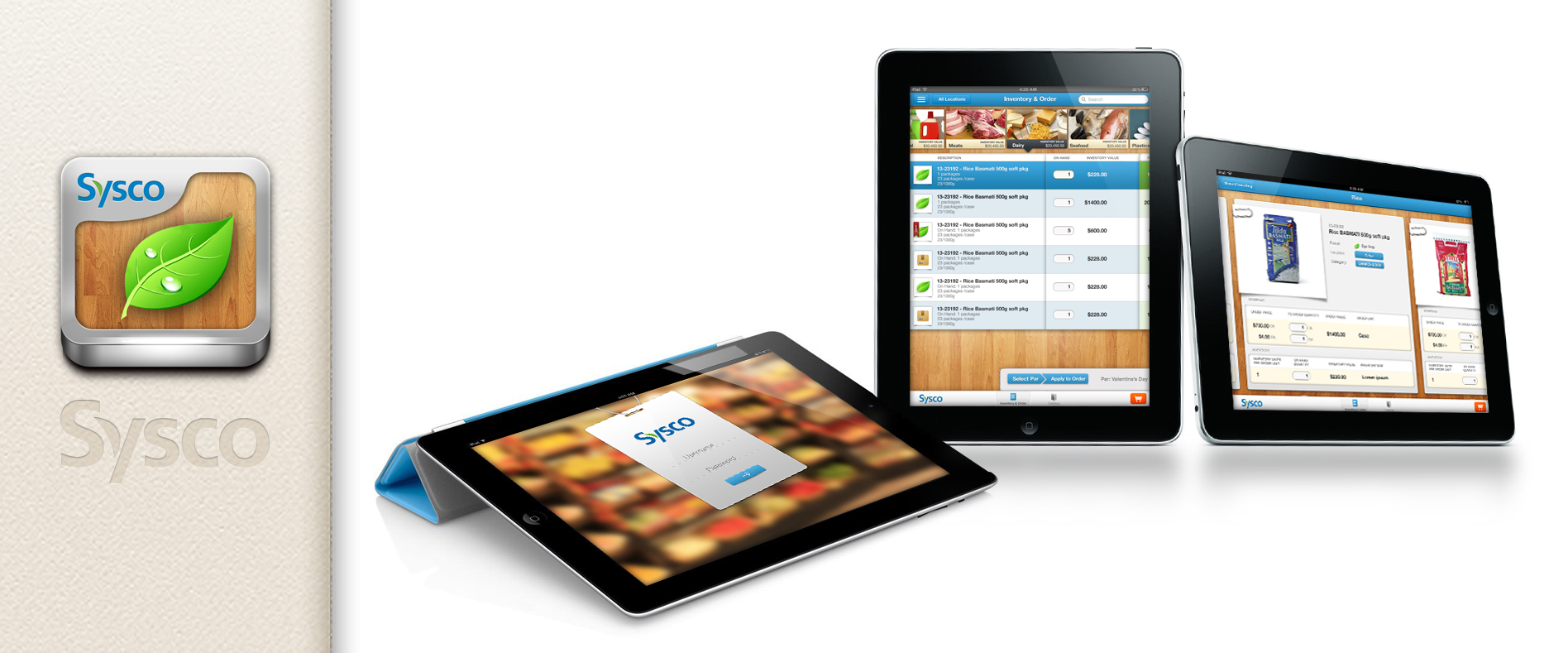
7. Final Product
In late 2012, Sysco Counts was published on the app store. It was also featured by the former co-CEO of SAP, Jim Hagemann Snabe at SAPPHIRE 2013 in his keynote at 1:09:00. In retail, Chef Robert Irvine mentions it in the season 5 finale of Restaurant Impossible.

